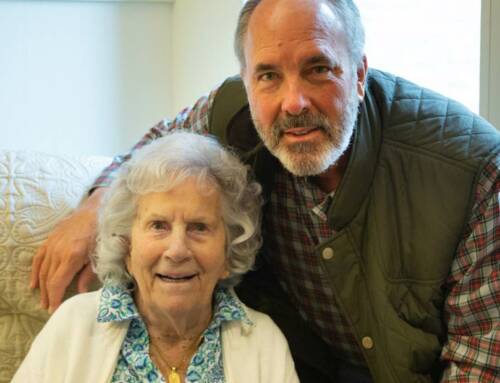If someone invited you to a music program, what is the first question you would ask? It would probably be “What kind of music?” or “What do I need to do?” As music is not one-size-fits-all, for the past 20 years, Masonic Village music therapists have used the flexibility of music to meet the needs of a wide variety of unique individuals.
Music is a companion that travels with us throughout our lives from the time we are born until the time we die. Here at Masonic Villages, music is intentionally used to achieve particular goals to meet a variety of residents’ specialized needs, which are assessed individually. The flexibility of music invites participation, even with a range of residents’ abilities and ages, for social, emotional, physical, cognitive and spiritual functions.
Socially, residents from age 50 to 100 are drawn together by the impetus of music during group experiences. Music provides a common space for residents to gather and express shared experiences, creating a new, joint history. This occurs both spontaneously, and intentionally as in music activities that involve sharing instruments or props or interacting with others in the group. Residents make eye contact, exchange social greetings and have the opportunity to engage with others.
Emotionally, the music and/or lyrics of a song may express the emotions a resident is feeling. Other times, music helps draw residents out of a sad mood. Residents who experience anxiety can be calmed by soothing music. Particular music can be used to help redirect residents who are feeling negative.
Physically, music evokes movement despite a variety of functional abilities. Residents are often observed tapping their toes or moving to the music, even without any prompts to do so. Props such as ribbon wands, scarves, balloons and hoops are used to facilitate movement. Instruments such as drums, shakers, castanets and sticks provide opportunities for using fine and gross motor skills. Instruments can be adapted to meet a resident’s particular physical abilities. Music’s beat provides a strong impetus for movement. For pain, a music-assisted relaxation group which uses sedative-style guitar playing with verbal prompts for progressive muscle relaxation and nature imagery, is offered to residents.
Cognitively, music invites residents to remember song lyrics, fill in word gaps, reminisce based on lyric themes and follow directions on how to manipulate their instruments or props. Songs from a variety of artists, decades and genres are used to connect to the specific repertoires of residents of all ages. People with varying levels of cognitive function can participate at whatever level is possible for them. Residents who experience times of confusion can often be redirected with the use of music, especially if it is from their preferred genre(s).
Spiritually, music helps connect residents to their particular faith or philosophy. At end of life, music can help create a sacred space for families to gather around their loved one and either reminisce together or sit in silence within the context of therapeutic support from the music therapist.
Whatever the stage of life, the specially trained music therapist intentionally uses music as the vehicle to address the specialized needs of residents – social, emotional, physical, cognitive or spiritual. Music provides the flexibility and impetus for residents to engage.
About the Author: Kathy Keener Shantz (right, above) graduated from Immaculata University with a Master of Arts in music therapy. She is employed as a board-certified music therapist at Masonic Villages and Hershey Medical Center.




